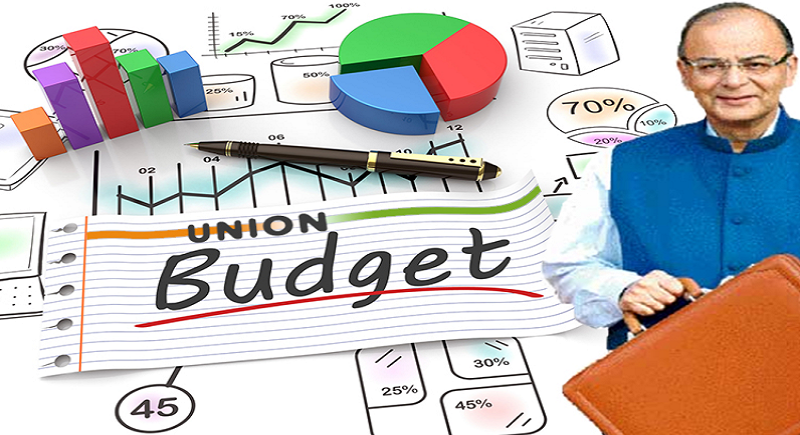Worried of understanding the budget..? Attend Finance Ministry's batch of 'Know your budget'..!
Total Views |
New Delhi, January 21: Budget isn’t about restricting what you can spend, but it gives you permission to spend without guilt or regret. Although an important part of the economic circle, it is mostly out of understanding for the common man. When asked to anyone of a non-financial background regarding the budget and the clues, queries, these effortlessly agree saying, it is difficult to understand the terms and concepts stated in the budget session.

With a view to overcome this issue and to learn the economic concepts at ease, the Finance Ministry has come up with an initiative to define the notions using the social media. It is just ten days to the session from today and the ministry has already put some theories in the common man’s plate. The said theories defined till date include Union Budget, Vote of Account, Capital Budget, Revenue Budget, Outcome Budget, Customs Duty, GST, Fiscal Deficit and many more under the banner headline ‘Know your Budget’ and a hashtag ‘#Budget2019’.
“As Union Budget is round the corner, we come across so many terms which leave us puzzled. So via Know Your Budget Series, we aim to assist you in enhancing your Budget Vocabulary. Before diving into details of Budget,let us first understand what a ‘Union Budget’ is?”, the Ministry tweeted instigating the initiative.
Here is what to learn from the Finance Ministry regarding the Budget and the relating terminologies :
1. The Union Budget :
The Union Budget of India, also referred to as the Annual Financial Statement in the Article 112 of the Indian Constitution, is the annual budget of the Republic of India. The Government presents it on the first day of February so that it could be materialized before the commencement of new financial year in April.
2. Vote of Account :
When the Union government needs to withdraw any money from the Consolidated Fund of India to cover its expenditure (especially during the time when elections are underway and a caretaker government is in place), it has to seek approval from Parliament. Article 266 of the Constitution mandates that parliamentary approval is required to draw money from the Consolidated Fund of India. A special provision is, therefore, made for a 'Vote on Account' by which the government obtains the vote of Parliament for a sum sufficient to incur expenditure on various items for a part of the year.
3. Capital Budget :
Capital Budget consists of capital receipts and payments. It also incorporates transactions in the Public Account. Granted by the Central Government, Capital receipts are loans raised by the government from the public (which are called market loans), borrowings by the government from the Reserve Bank and other parties through sale of treasury bills, loans received from foreign bodies and governments, and recoveries of loans. Whereas the Capital payments consist of capital expenditure on acquisition of assets like land, buildings, machinery, and equipment, as also investments in shares, loans and advances.
4. Revenue Budget :
Revenue budget involves revenue receipts and revenue expenditure. These expenditures and receipts are related to the day to day functioning of the government. Expenditure is needed to finance government functions like defense, social services, administration etc and these are the main revenue expenditures. Similarly when the government is performing its day today functions, lot of revenue will be accrued to it. Tax revenues and non tax revenues are the two types of revenue receipts.
5. Outcome Budget :
Outcomes are the end products and results of various Government initiatives and interventions, including those involving partnership with the State Governments, Public Sector Undertakings, autonomous bodies and the community. Under outcome budgeting, each Ministry presents a preliminary Outcome Budget to the Finance Ministry, which is responsible for compiling them. The Outcome Budget becomes a progress card on what various Ministries and Departments have done with the outlays in the previous annual budget.
6. Customs Duty :
Customs Duty is a tax imposed on imports and exports of goods. Import duties are generally of the types constituting Basic duty, Additional Customs duty, True Countervailing duty or additional duty of customs, Anti dumping duty, Safeguard duty. While revenue is a paramount consideration, Customs duties may also be levied to protect the domestic industry from foreign competition.
7. Goods and Services Tax :
Divided into five tax slabs for collection of tax - 0%, 5%, 12%,18% and 28%, GST is an indirect tax levied in India on the supply of goods and services. GST is levied at every step in the production process, but is meant to be refunded to all parties in the various stages of production other than the final consumer.
8. Fiscal Deficit :
The gross fiscal deficit (GFD) is the excess of total expenditure including loans net of recovery over revenue receipts (including external grants) and non-debt capital receipts. Generally fiscal deficit takes place either due to revenue deficit or a major hike in capital expenditure. A deficit is usually financed through borrowing from either the central bank of the country or raising money from capital markets by issuing different instruments like treasury bills and bonds.
Now, eyes being on the budget and not accurate enough to provide a basis for a firm commitment, it represents only the budget maker's understanding of the scope and expense of what needs to be done. The session is scheduled to begin on 1st of February this year.